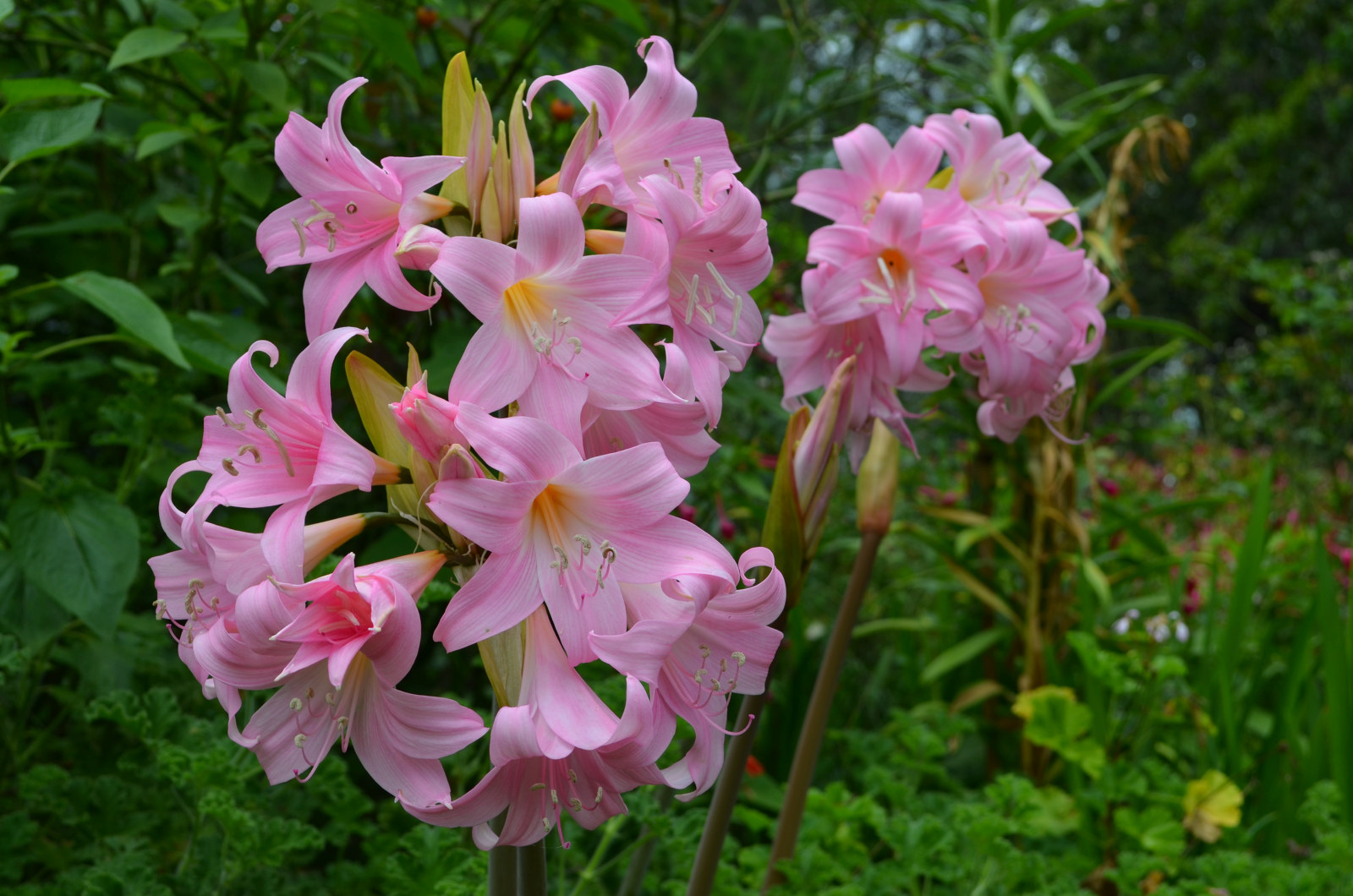As the seasons turn
When I worked across at Vaucluse House there were four plants that defined the year for me: the wattles above the carriage loop, the scarlet rhododendron beside the creek, the ‘wax flower’ hoya on the wirework plant stand, and of course the wisteria on the front verandah. As each flowered in turn it meant another season was passing – usually accompanied by the exclamation “where has the year gone!”
‘At the Elizabeth Farm...’
Since I became curator at Elizabeth Farm I have a new ‘plant calendar’ that I look out for: spikes of fiery orange on the tree aloes, a myriad of creamy flowers on the towering cactus, bunya cones (Araucaria bidwillii) safely torn to shreds by the corellas before they fall, the pot of wonderful paintbrush lily (Haemanthus coccineus) on the verandah and, at the start of spring, the explosion of pink on one of my favorite shrubs, the Rogiera (though I still call it Rondoletia) which is in flower right now.
Looking out from the drawing room the Rogiera (Rogiera amoena, the name has changed recently from its previous classification of Rondoletia amoena, which you’ll also sometimes see it spelled Rhondoletia) frames one side of the Camellia ‘Aspasia’, the other side being a sprawling purple Mexican salvia with a nandina rising above it. It grows about three metres high, and in spring is smothered with dense heads of pale white and pink flowers.
It also has a lovely scent that fills the east garden at dusk. In the 19th century a perfume – ‘essence of rondoletia’ – was quite popular, though the recipes I have found for it actually don’t seem to contain rondoletia itself. Perhaps the combination of the several flowers used resembled its namesake? An ‘old fashioned’ plant, this great garden performer produces stems perfect for cutting, and the vases in the nearby drawing room always feature them at this time of year. A few spot flowers through summer continue to provide blooms.
Rogiera requires good sun, preferably full though they can take light shade, and needs good drainage. A native of Central America, they are drought tolerant but frost sensitive. Trim back after flowering to keep it in shape, and remove leggy long twigs. It’s a bit of cliché to say this is one of those plants that really should be grown more often, but to me the Rogiera is a real trooper and a great spring performer that deserves a place in Sydney gardens.
Published on
Plant your history
Browse all
Plant your history
Beautiful bountiful bamboo
One of the most recognisable plants growing at Museums of History NSW today is bamboo. This colourful plant has a long history in colonial gardens

Plant your history
Sumptuous cape bulbs light up late summer gardens
Belladonna Lilies and Crinum Lilies are tough bulbs that never say die and can survive years of neglect

Plant your history
Acanthus - an apt symbol for The Mint
Look at any classical building today, anywhere in the world and chances are you will find an acanthus leaf lurking somewhere

Plant your history
Extending the olive branch
Just over a year ago we started a project to ensure the survival of the Elizabeth Farm European olive tree (Olea europaea), which is believed to be Australia’s oldest living cultivated olive tree
